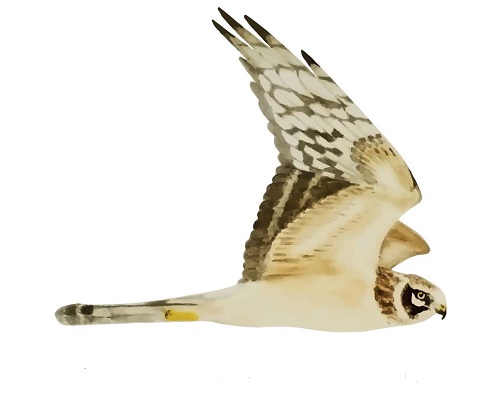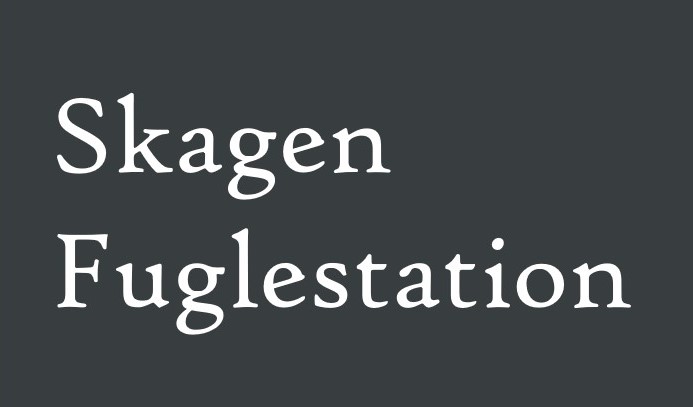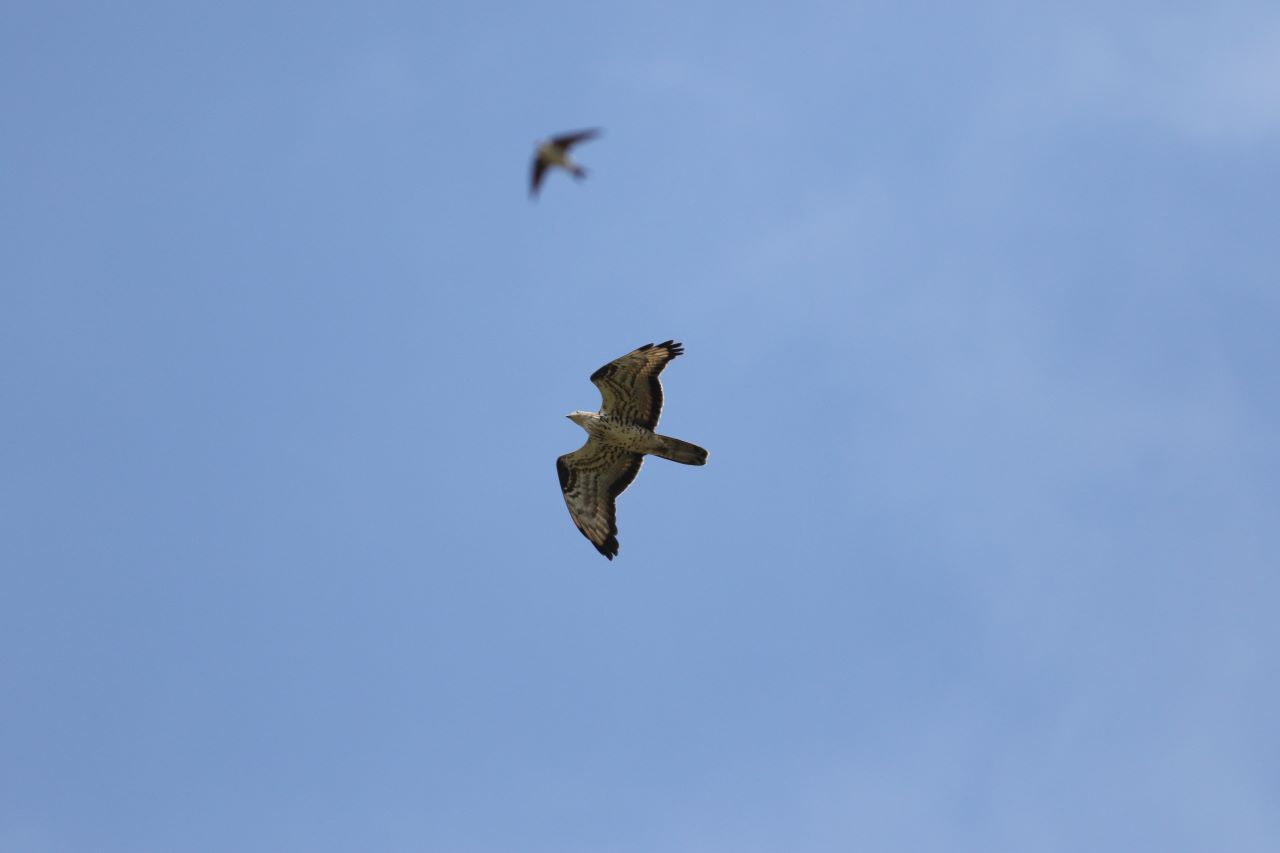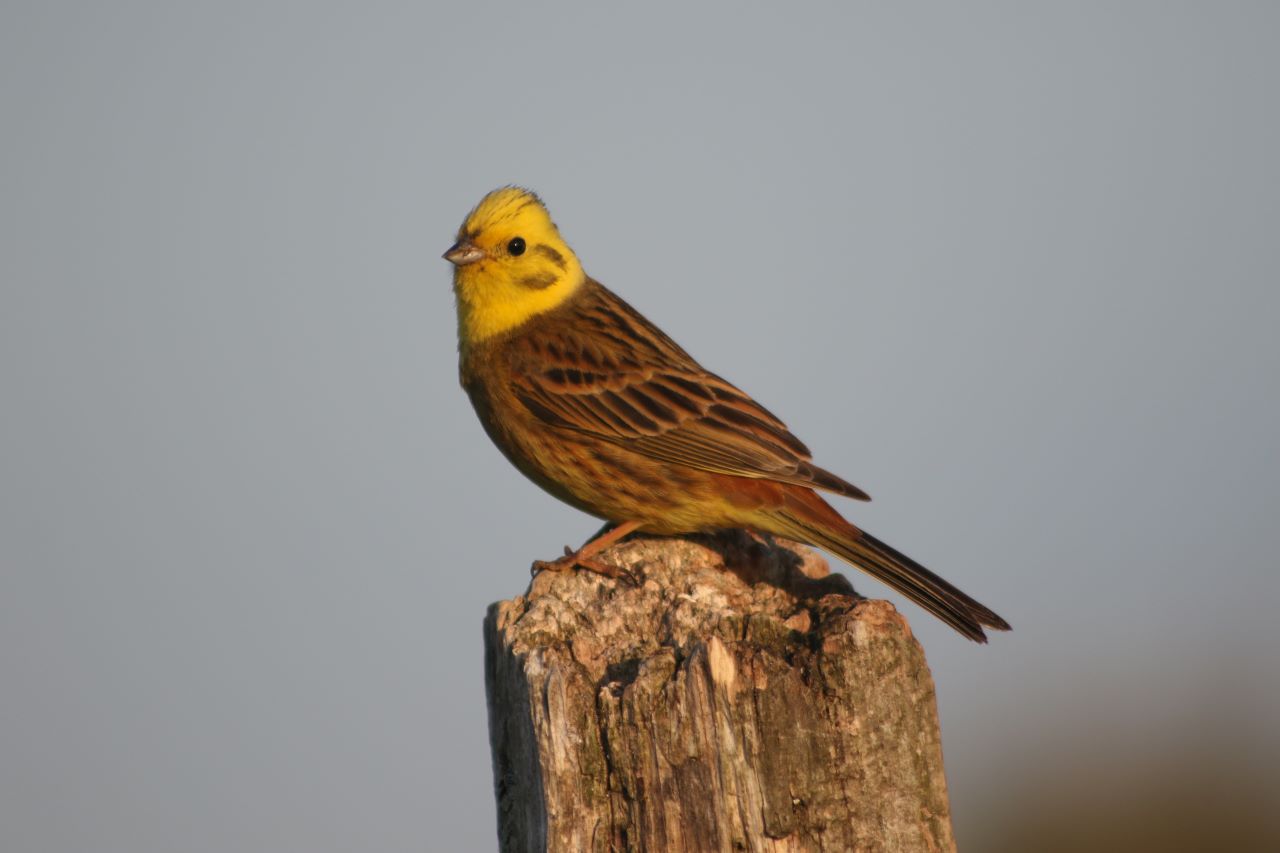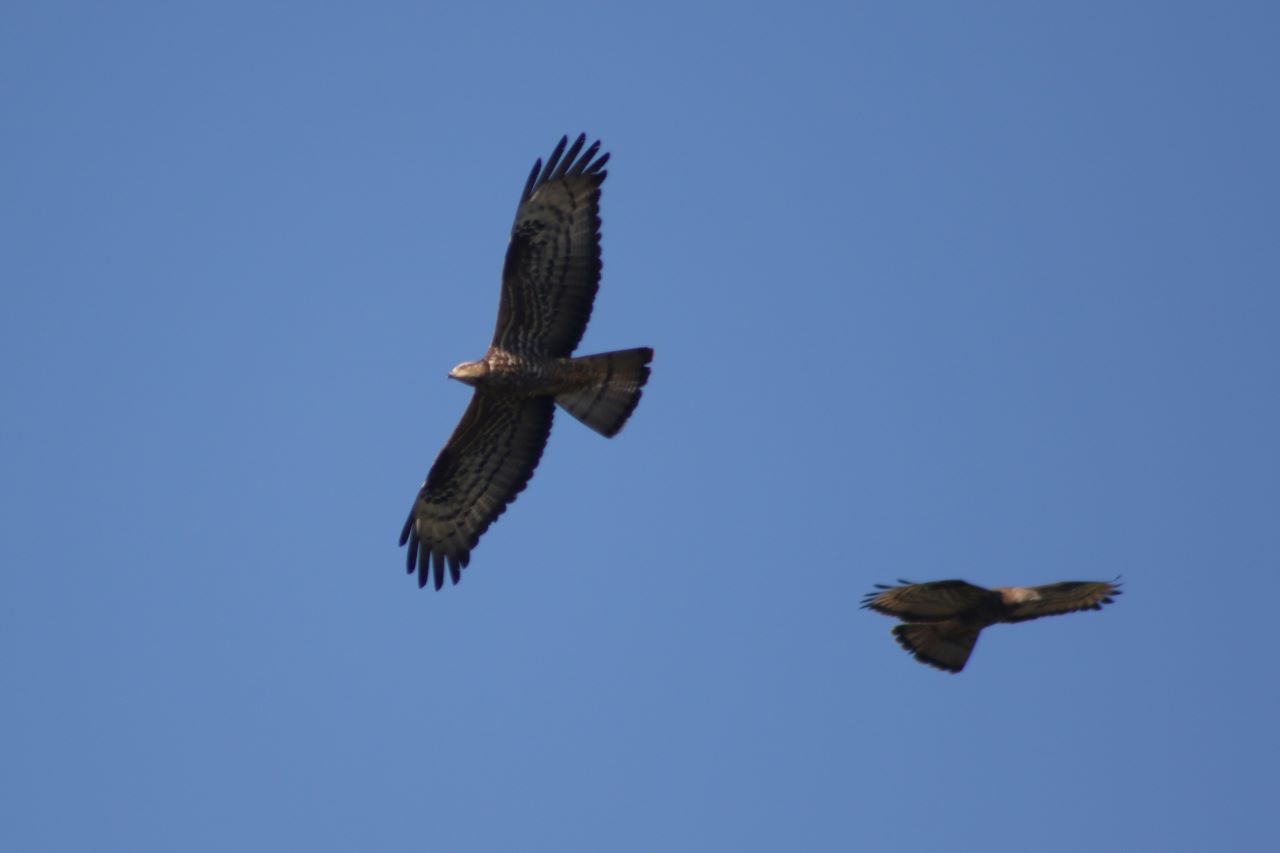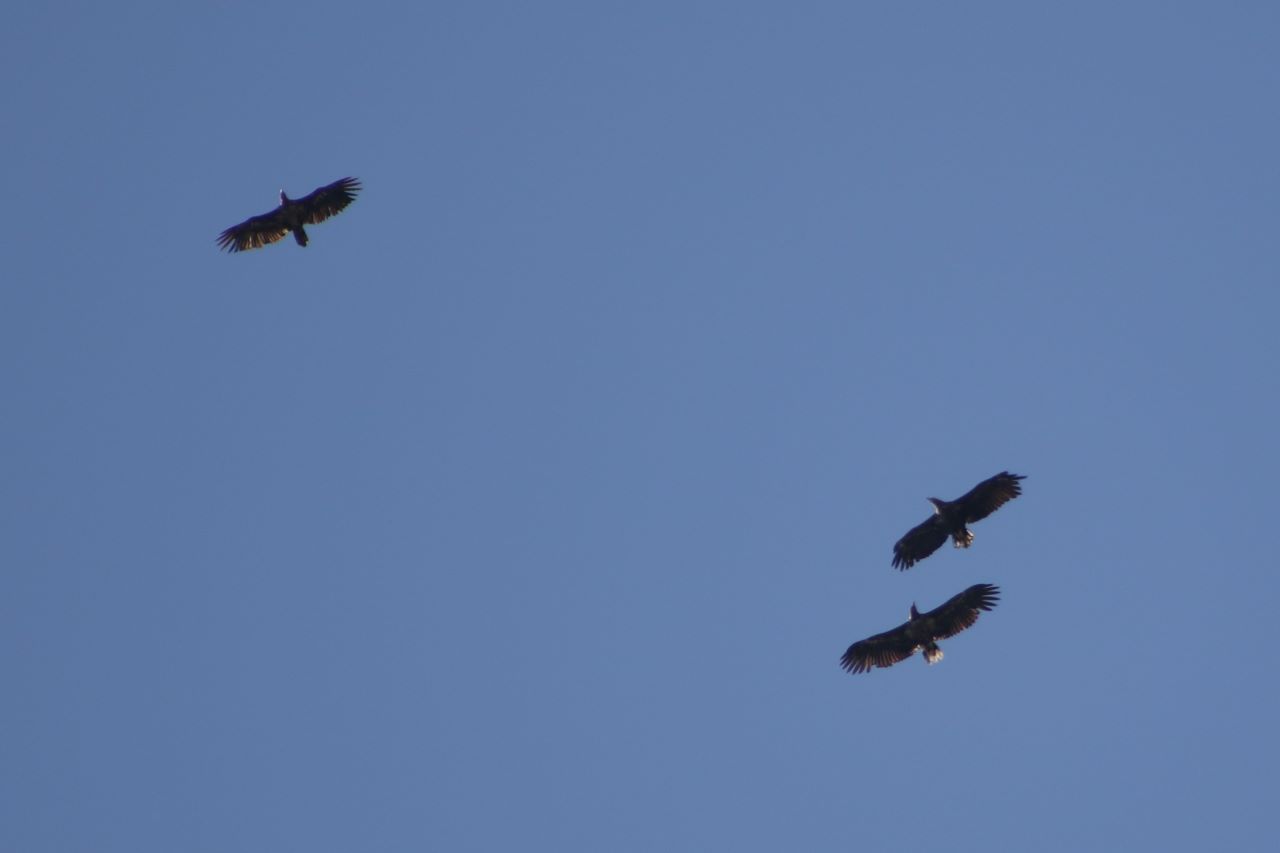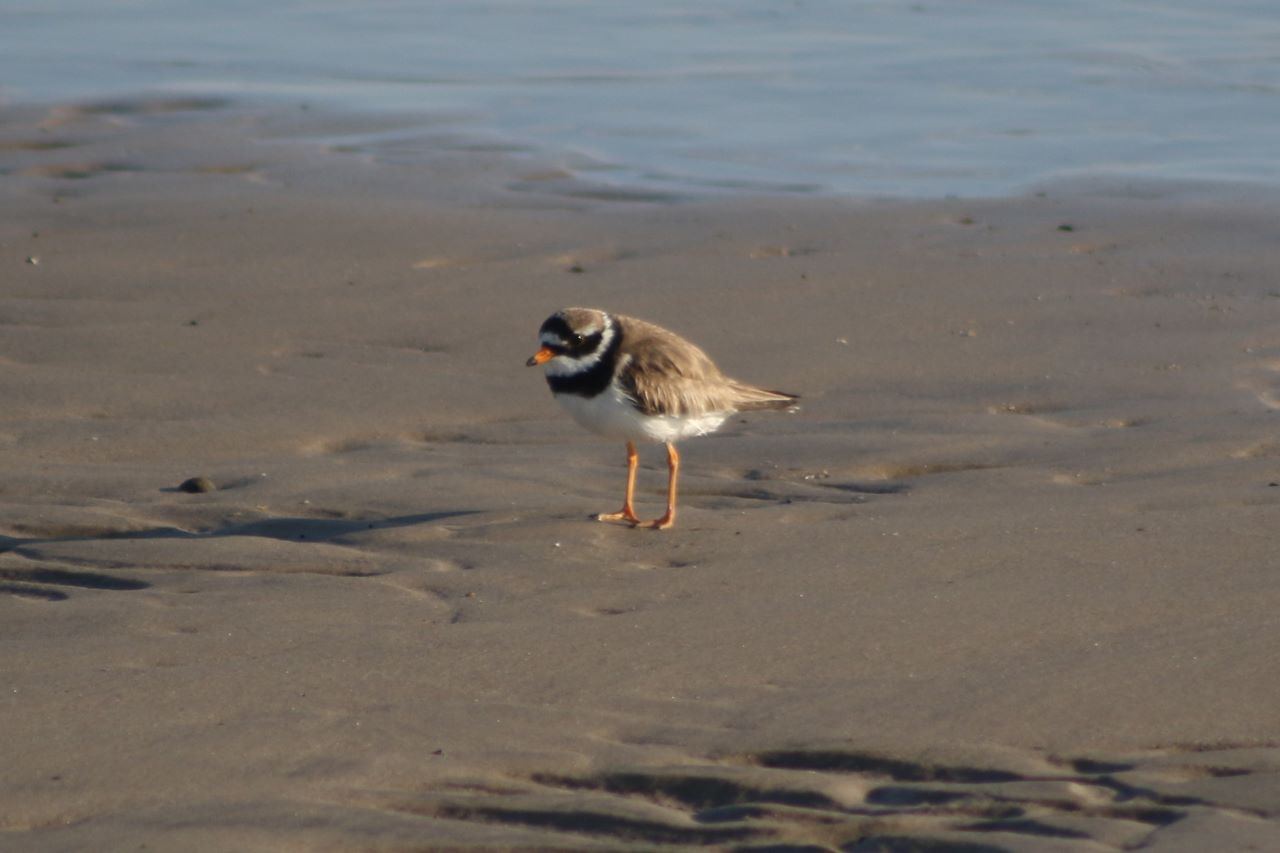Her på Skagen Fuglestations blog bringes korte nyheder i dagbogsformat om hændelser på fuglestationen.
Raptor watching
Today’s weather was a bit windy, we were at the station a bit longer, we couldn’t go out early for the morning observation but later in the morning we went out for raptor witching because all the past few days has been raining and windy, we not been going out much on birding or ringing that is reason they were less sightings around Skagen, and we were out for four hours on raptor witching , which was nice been out after few days of not much bird birding.Our raptor witching today has really helped me a lot because I have not been doing much on raptors, it was nice to see the difference between pertains on various raptors and that has helped me in knowing the difference in each species. The guests at the apartment were out to visit the Skagen Museum.
The highlights from today’s raptor witching and observation.
Red Kite / Rød Glente 7
Common Buzzard / Musvåge 15
Honey Buzzard / Hepsevåge 44
Sparrow hake / Spurvehøg 3
Kestrel / Tårnfalk 3
White-taied Eagle / Havørn 2
Skagen Fuglestation: Michael Colley, Zach Pannifer, Dante Shepherd, Lauren Evans, Jesper & Anna.
Honey Buzzard (Hvepsevåge) by Zach Pannifer
Rain & a Marten
Today saw heavy rain over Skagen for most of the day. At the station, we continued working on our admin tasks including, checking the entry of our migration counts from the Spring, as well as finishing our raptor summaries where each day we summarise the birds of prey migrating over Skagen.
Michael headed into town to shop for dinner whilst Lauren headed up to the kiosk in the car park to seek permission for check the Landsvale (Barn Swallow) and Bysvale (House Martin) nests on the rafters of the building. The staff are kindly allowing us to monitor the nests and we look forward to counting the nests and determining whether they are on eggs or chicks on a drier day!
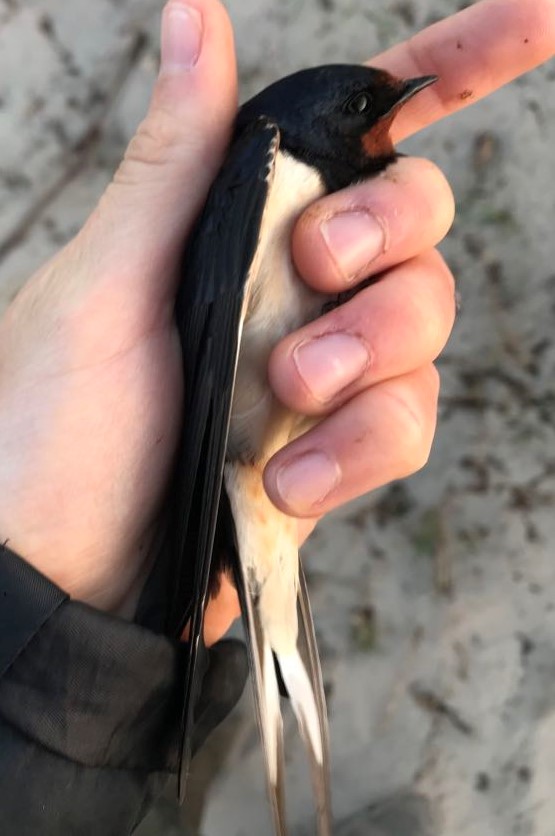
Landsvale (Barn Swallow) caught earlier this Spring at Kabeltromlen.
Dante headed out birding round Ellekrattet, World’s End, and the beach, although he unfortunately timed it poorly and wasn’t out long until it started to pour it down even more! Despite the poor conditions, he saw 3 Rødrygget Tornskade (Red-backed Shrikes), the 2 juvenile Sortstrubet Bynkefugle (Common Stonechat), 1 Bjergvipstjert (Grey Wagtail) as well as plenty of gulls on the beach to scan through. The undoubted highlight of his outing, which the rest of us were rather jealous of, was a Beech Marten crashing through the undergrowth and climbing trees just to the north of World’s End!
The rest of the afternoon was spent learning to make ‘Domada’- a classic Gambian dish which Michael has made for us during his stay here and, since he will be leaving the station next week, we felt we needed to learn how to make it ourselves!
A full list of today's observations can be found here.
Skagen Fuglestation: Michael Colley, Zach Pannifer, Dante Shepherd, Lauren Evans, Jesper & Anna.
Breeding birds & ring-reading
Today represented the last day of our daily Spring migration ringing at Kabeltromlen however, Michael and I woke up to strong winds and heavy rain (which were not in the forecast) which unfortunately meant open the nets was impossible. This Spring, we have ringed 2580 birds here in Skagen and we now switch our focus to monitoring Skagen’s breeding birds.
At the station we instead used the morning to get on with other jobs including washing bird bags, writing rarity reports, entering and checking the last of the ringing data and, submitting, and quality checking Spring observation data and counts. Our guests Jesper and Anna headed out to Skarvsøen and had a lovely morning, despite the mosquitoes!
In the afternoon, Dante and I headed out birding round Elle Krattet, World’s End and Skarvsøen. Birding highlights included 4 resting Hvepsevåge (Honey Buzzards), 2 Grå Fluesnapper (Spotted Flycatchers), 1 Rødrygget Tornskade (Red-backed Shrike) and 2 juvenile Sortstrubet Bynkefugl (Stonechats). Whilst on the beach, we also managed to find another Stor Præstekrave (Ringed Plover) nest which we will continue monitoring. At Skarvsøen, we took the opportunity to count the breeding Skarv (Cormorants) and were pleased to see over 100 chicks in more than 50 active nests as well as some fledglings out on the lake. Michael went to the harbour to try and read some colour rings and managed to get the codes of a Norwegian-ringed Sildemåge (Lesser Black-backed Gull) and Svartbag (Great Black-backed Gull) and he’s looking forward to getting the recovery information.
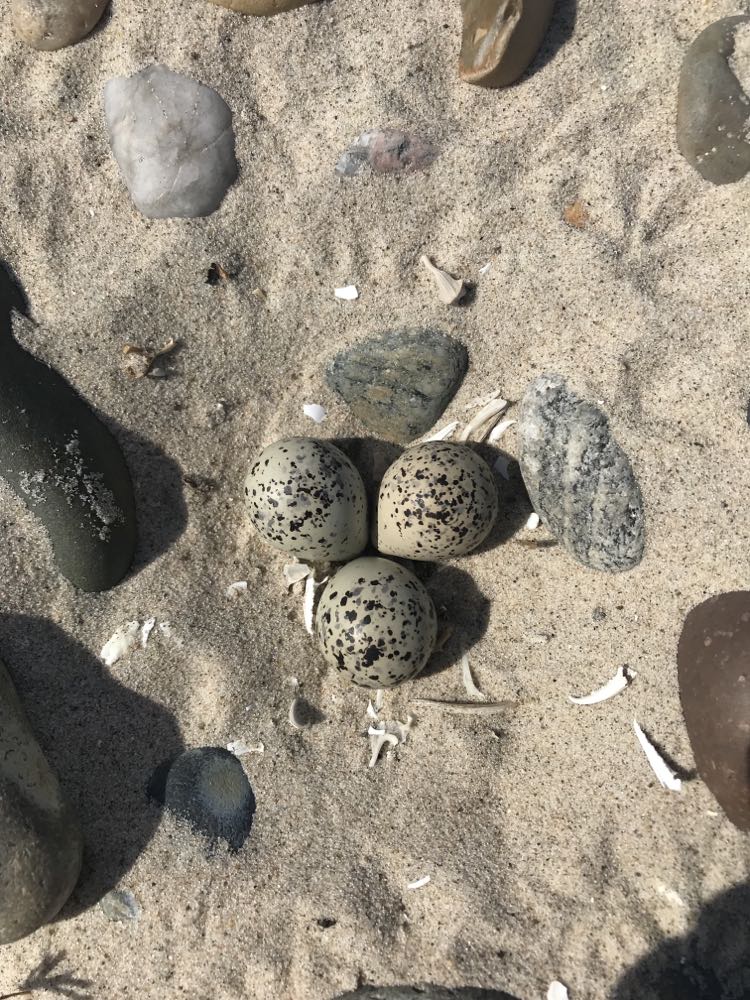
Stor Præstekrave (Ringed Plover) nest.
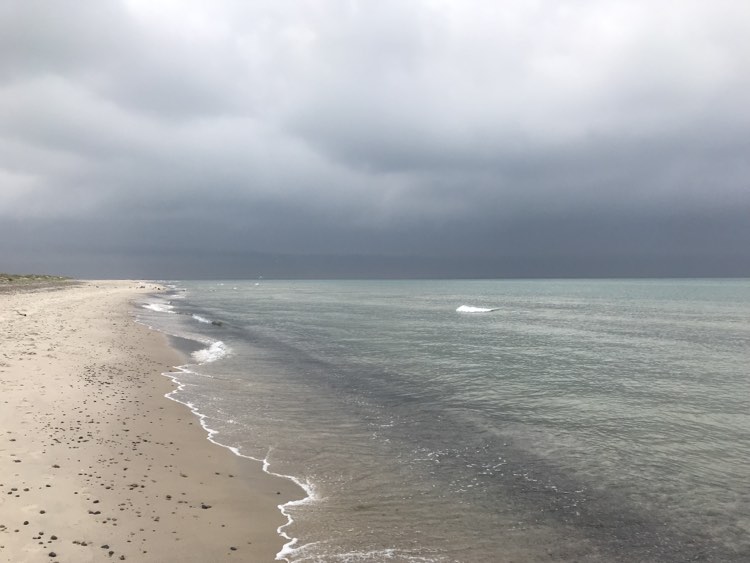
Storm clouds over Nordstrand.
Skagen Fuglestation: Michael Colley, Zach Pannifer, Dante Shepherd, Lauren Evans, Anna & Jesper.
Ringing, Raptor watching & guided tour
Michael and I headed ringing at Kabeltromlen for sunrise- one of our last sessions of the spring season. Similar to yesterday, we caught 21 birds including the first juvenile (1st calendar year) Rødhals (Robin) of the year and a surprising Vindrossel (Redwing) with a brood patch!
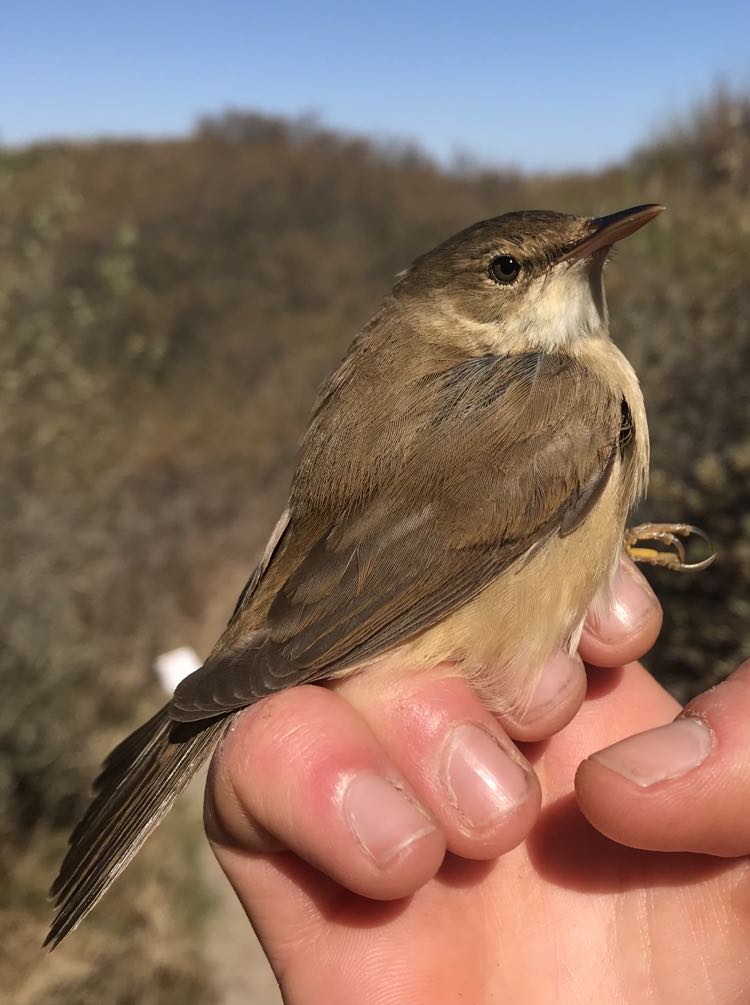
Zach and Dante enjoyed a little more sleep before heading to Saftenvandsbakken for a spot of raptor watching. The highlights from their morning observations included 4 (Havørn) White-tailed Eagles, 29 Hvepsevåge (Honey Buzzards) and a singing Græshoppesanger (Grasshopper Warbler).
We spent the afternoon working through many different admin tasks now that we’ve come to the end of the spring observations and daily ringing. Dante and I then headed out to lead a tour for Ken and Elizabeth, who were visiting Skagen for the day as part of a cruise. We all had a brilliant afternoon with excellent views of Trane (Crane), Blå Kærhøg (Hen Harrier), Hvepsevåge (Honey Buzzard) and Gulbug (Icterine Warbler).
A full list of today's observations can be found here.
Skagen Fuglestation: Michael Colley, Zach Pannifer, Dante Shepherd, Lauren Evans, Anna & Jesper
Kabeltromlen Ringing Totals:
Tornsanger (Common Whitethroat)- 3
Gransanger (Chiffchaff)- 1
Gærdesanger (Lesser Whitethroat)- 2
Rørsanger (Reed Warbler)- 2
Rødhals (Robin)- 1
Kærsanger (Marsh Warbler)- 1
Gærdesmutte (Wren)- 1
Lille Gråsisken (Lesser Redpoll)- 1
Munk (Blackcap)- 5
Blåmejse (Blue Tit)- 1
Vindrossel (Redwing)- 1
Sangdrossel (Song Thrush)- 1
Solsort (Blackbird)- 1
Total: 21
Finally Some Rain
As usual, Michael and Lauren had opened the nets at Kabeltromlen for sunrise. The weather was nice because it was cloudy with a lot of expectations that the day is going to be good for ringing but our expectations were cut short because there came rain which cut the ringing session shot that we have to close the nets, we wanted to continue the ringing till late morning but the radar read that there will be coming another heavy rain In the next thirty minutes in which we don’t want to take the risk were had to close the ringing early due to that rain and the nets where close by 8:45.
After a long day of Dante cooks us a delicious dinner, and we welcome new guest to the apartment Esper and Anne.
Back at the station, we enter the date from the ringing, sheets checking and some of the admin stuff at the station, which keeps us busy for a while.
This morning ringing, we had 21 birds of 9 species and highlights from the ringing below birding and ringing.
Lesser Whitethroat / Gærdesanger 1
Common Whitethroat / Tornsanger 3
Yellowhammer / Guspurv 1
Wren / Gærdesmutte 1
Marsh Warbler/ Kærsanger 3
Icterine Warbler / Gulbug 1
Reed Warbler / Rørsanger 1
Blackcap / Munk 9
Song Thrust / Sangdrossel 1
The observation of the morning Dante was at word end but there was not much to there in which he later went Nordstrand where it was still quiet, whiles Zack was at Ellekrattet and some other places around and below are their highlights.
Rose Finch / Karmindompap 2
Wood Sandpiper / Tinsaned 1
Great Reed Warbler / Brosselrør Sanger 1
Golden Oriole / Piroi 1
Honey buzzard / Hvepsvsge 6
Skagen Bird Observatory: Dante Shepherd, Lauren Evans, Michael Colley, Zach Pannifer
Yellowhammer (Gulspurv) by Zach Pannifer
So Hot!
Today has been one of the hottest days in Skagen for quite a while and it has made it quite challenging to bird in for long hours. Lauren and Michael in particular found it uncomfortable in their waders during ringing this morning. Thankfully they had morebirds than yesterday to make putting up with the heat worth it and the mosquitoes were also put off by the intense heat so that was nice. From Kabeltromlen I had a 6 Honey Buzzard (Hvepsevåge), 1 Osprey (Fiskeørn), 1 Golden Oriole (Pirol), 1 Spotted Flycatcher (Grå Fluesnapper) 1 Rosefinch (Karmindompap) and 1 Serin (Gulirisk) - the latter of which was the first that I have picked out myself. Midmorning I then headed south to Saftevandsbakken to watch for birds of prey, but it became apparent early on that the raptors were mostly sticking further west so I headed to Kap Gadagung for a bit of a better view. In total I had at least 11 Honey Buzzard (Hvepsevåge), 12 Buzzard (Musvåge), 4 Red Kite (Rød Glent), 2 White-tailed Eagle (Havørn) and my best views yet of the Steppe Eagle (Steppeørn). There were 3 Spotted Flycatcher (Grå Fluesnapper) at Batteriskoven.
Click here for today's sightings on DOFbasen.
Today's Ringing Totals:
Solsort (Blackbird) - 2
Sivsanger (Sedge Warbler) - 1
Kærsanger (Marsh Warbler) - 2
Rørsanger (Reed Warbler) - 1
Gærdesanger (Lesser Whitethroat) - 4
Tornsanger (Whitethroat) - 3
Havesanger (Garden Warbler) - 2
Munk (Blackcap) - 10
Gransanger (Chiffchaff) - 1
Topmejse (Crested Tit) - 1
Bogfinke (Chaffinch) - 3
Dompap (Bullfinch) - 3
Gulspurv (Yellowhammer) - 1
Skagen Bird Observatory: Dante Shepherd, Lauren Evans, Michael Colley, Zach Pannifer
Honey Buzzards (Hvepsevåge) by Zach Pannifer
Slangeørn!
It was foggy in the morning so we all had a later start. Lauren and Michael went ringing at Kabeltromlen as usual and were happy for a bit of a lie in! They didn’t catch that many birds, just 7, so two Lille Korsnæb and two Topmejse were a good result! Zach had a Lille Præstekrave. Lauren went looking for Stor Præstekrave nests at Northstand and found 2, both with eggs.
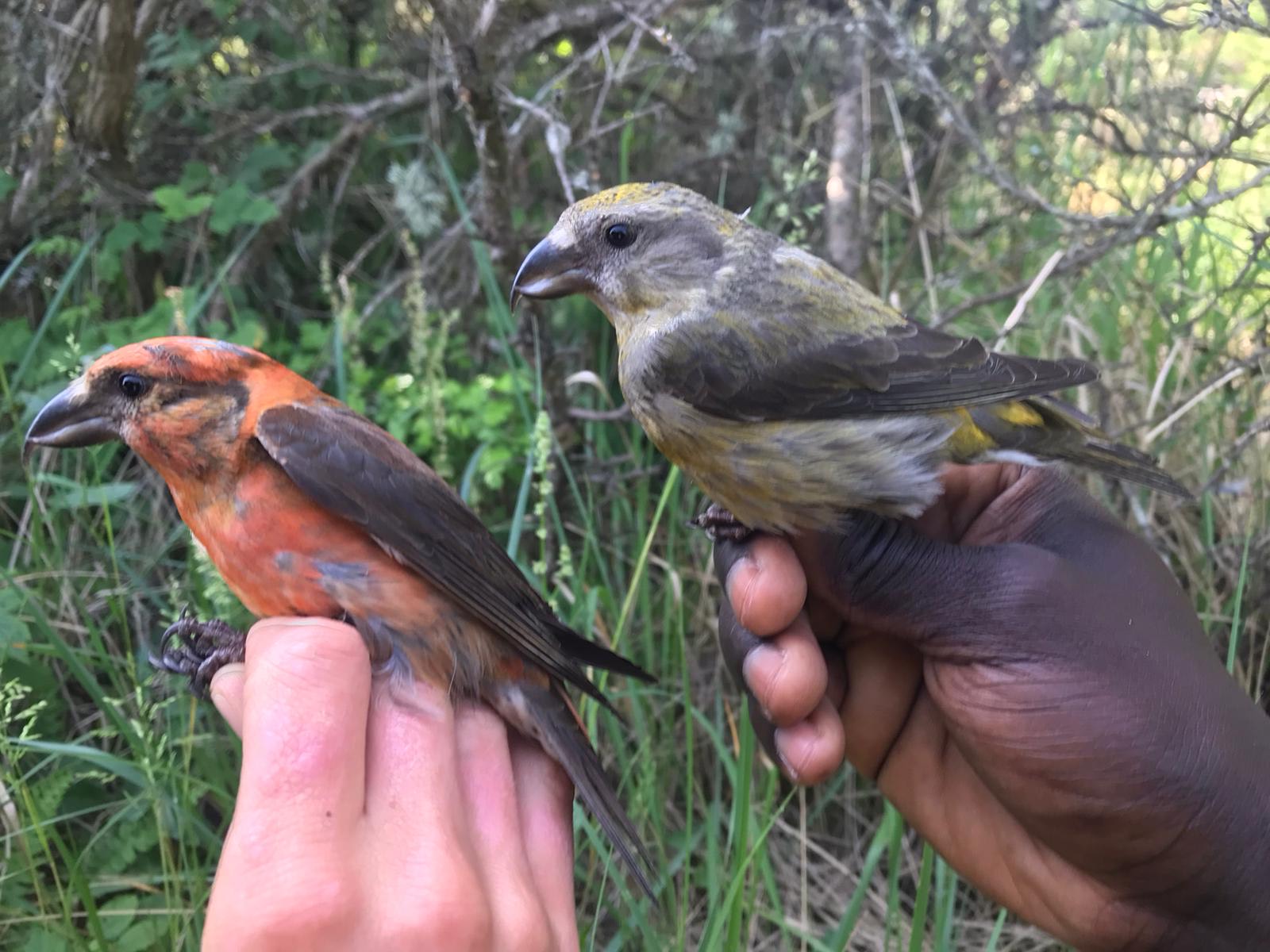
I headed to Saftenvansbacken around 10 after the fog had cleared. 18 Hvepsevåge, a Blå Kærhøg, an Fiskeørn and a Havørn were the highlights when just before 1pm I got onto a raptor far away which looked like a Slangeørn. It stayed far in the haze for a while beyond Buttervej before slowly coming closer. The closest it came was somewhere over Nedermose and here I could see enough to be absolutely sure on the identification. Unfortunately I lost it to the south-west as I put the news out. I could see it had a pale head and obvious missing inner primaries which makes it a different bird to the one seen 10 days ago. It never came close enough for photos but I made some crude field notes after the event. Overall very exciting to discover a rare raptor in Skagen. The bird was seen briefly by one birder further soutn. The Steppeørn was seen again by others whilst looking for the Slangeørn.
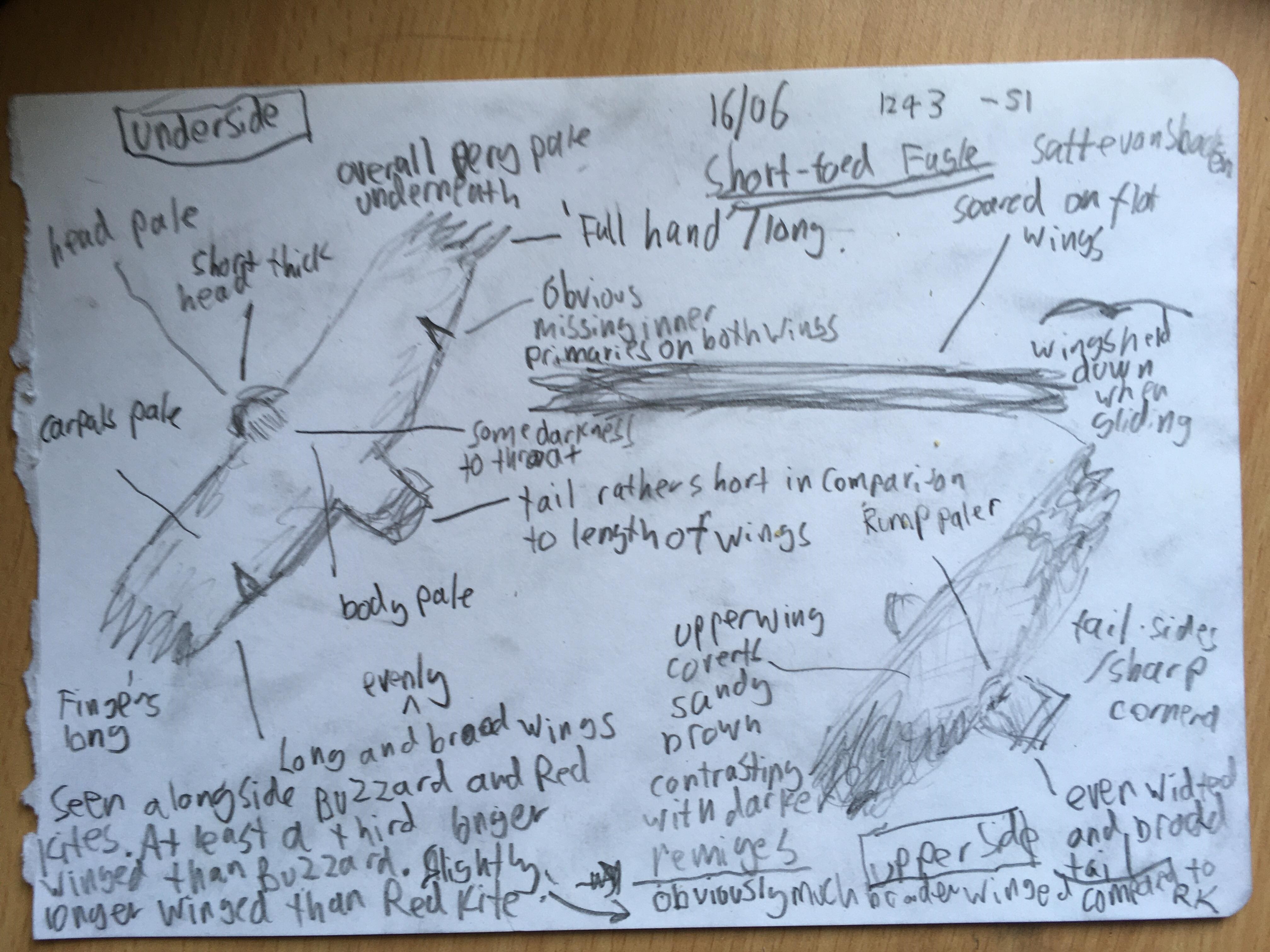
Ringing totals from Kabeltromlen:
- Lille Korsnæb 2
- Topmejse 2
- Tornsanger 1
- Gransanger 1
- Rørsanger 1
Buskrørsanger & Lille Rørsanger!!!
Where to start… what a day! Today started like a typical day, it was overcast and cooler and Zach headed to World’s End for morning observations, whilst Michael and I headed to Kabeltromlen to open the nets for sunrise. Visible migration was rather slow, the highlights being two (Strandhjejle) Grey Plover and one Stenpikker (Northern Wheatear).
Michael and I headed for our first round as usual which wasn’t particularly busy but Michael came back to the table saying he’d extracted an Acrocephalus warbler, of which he wasn’t entirely sure of the species. He took it out the bag and my immediate thought was Buskrørsanger (Blyth’s Reed Warbler). It had a cold-toned, greyish mantle with no rufous on the flanks, rump or underparts and the head had an obvious, pale supercilium. We took all the required measurements and wing formula, then double and triple checked our measurements. We were absolutely thrilled to confirm it was a Blyth’s Reed Warbler- a new species in the hand for both myself, and Michael. Zach arrived at the ringing site at just the right time to collect some much-needed mosquito spray and we gave Simon and Lisa a wake-up call at 4:45am to give them the good news!
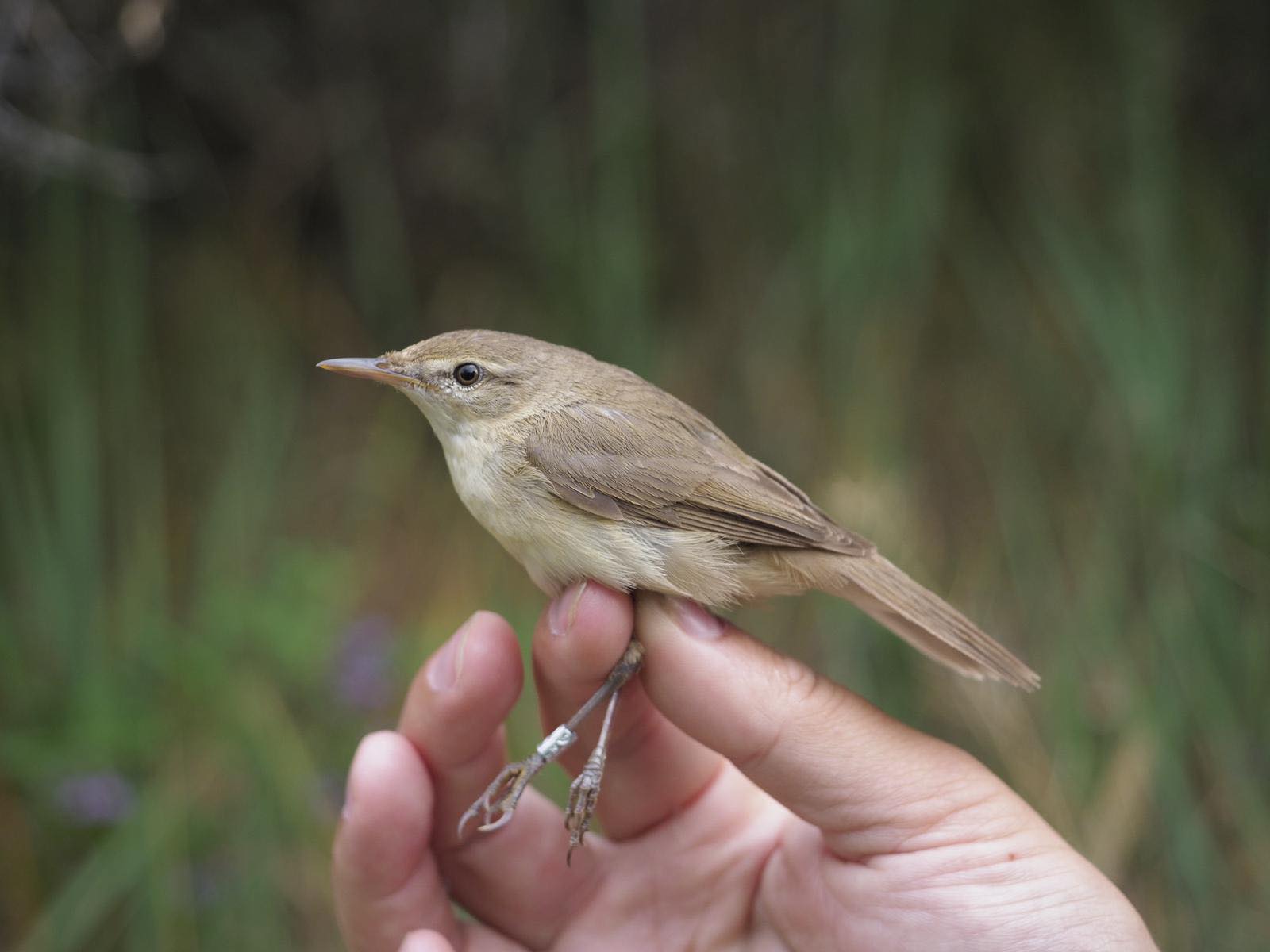
Buskrørsanger (Blyth's Reed Warbler).
After releasing the bird, we were all in extremely high spirits as we carried on ringing thinking the day couldn’t get any better. Overall, we caught 23 birds, and the nets weren’t extremely busy so we decided to close around 9am. I went to close one of the nets that runs through reeds when I spotted a small looking Acrocephalus at one end. As soon as I approached the bird, I saw a prominent, pale supercilium and dark crown and knew exactly what it was. I was surprised by how obvious this species was in the hand, but I couldn’t quite believe what was happening- we’d just caught a Lille Rørsanger (Paddyfield Warbler) on the very same day!
We quickly closed the rest of the nets and undertook the same process of ringing the bird and taking a full suite of measurements and wing formula before phoning Simon and Lisa (again!) who put the news out. They swiftly arrived alongside Dante, who had been birding the area, and a few local birders. This was also a new species for all of us volunteers at the station and was thoroughly enjoyed by everyone present before being released. We were then lucky enough to see the bird in the field, moving through some Hawthorn bushes.
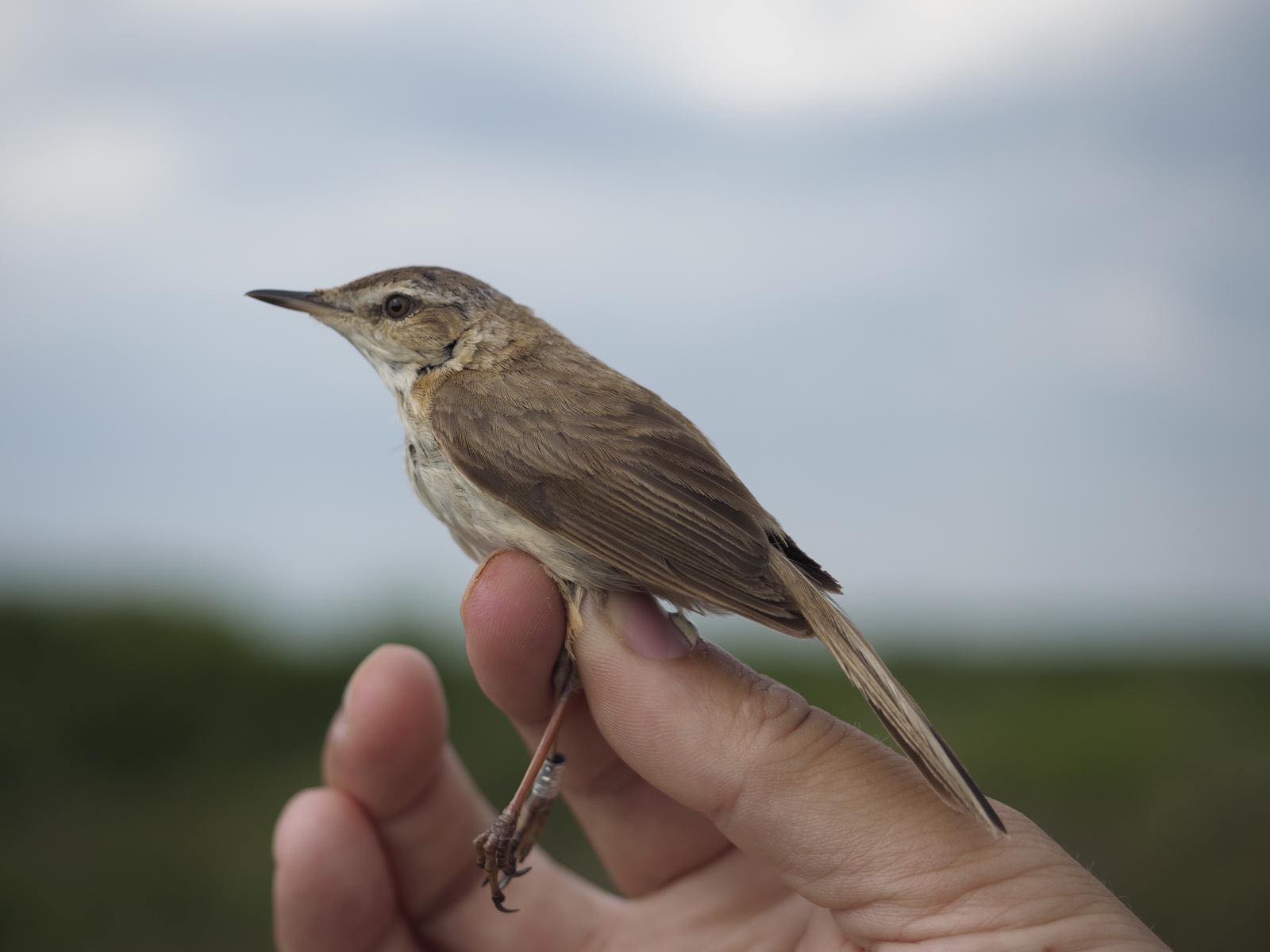
Lille Rørsanger (Paddyfield Warbler).
The Blyth’s Reed Warbler is only the second individual caught by the station whilst the Paddyfield Warbler is the fifth caught by the station but only a 20th record for Denmark. It seemed like fate that we caught both these species the morning after I gave my presentation on Acrocephalus identification and ageing, and it gave us an amazing chance to put these skills into action. We now think we should do more presentations on rare species identification and ageing to see if this luck works again!!!
In the afternoon, Dante, Zach, Michael, and I headed out to the Aarhus University radar station to help Thomas move it off the sand-dunes ready to be taken back to Aarhus. This sounded much easier than it turned out to be… After nearly 2 hours of pushing, getting stuck in the sand, sweating in the boiling sun and being bitten by horseflies, we finally managed to shift it, only after attaching it to two pick-up trucks! Thanks you to Thomas, Troels & Snäphor for having us out there, we've all really enjoyed watching raptors with you all.
The whole process was made slightly better by the fantastic views of the Steppeørn (Steppe Eagle) and three Havørn (White-tailed Eagles) which circled nearly over our heads as we laboured. Back at the station, we entered data and completed various admin tasks and are now looking forward to an evening celebrating our fantastic day, ready to get up and do it all again tomorrow! It’s days like these which make it even more fun to be out!
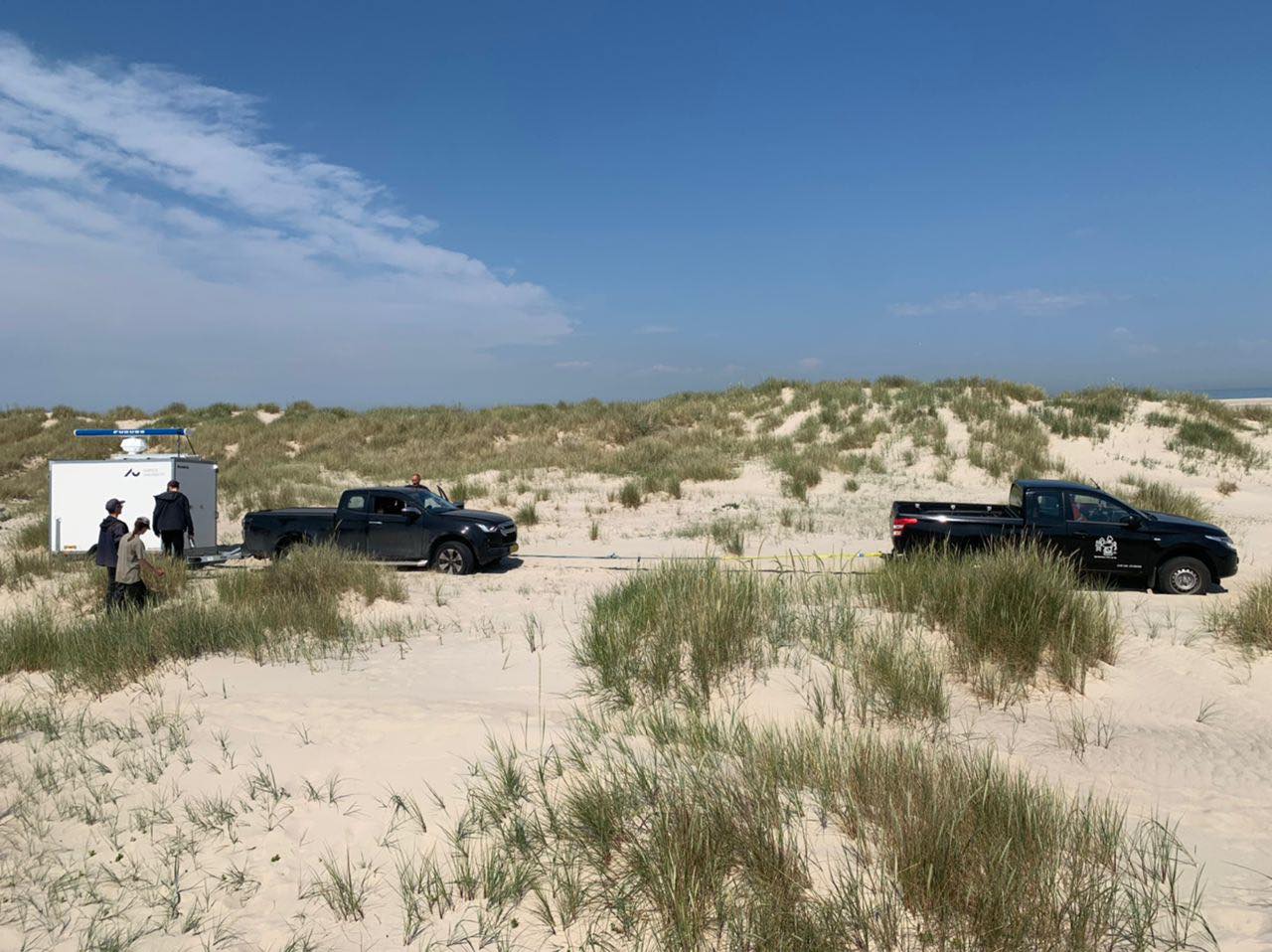
Shifting the Aarhus University radar station off the dunes- much more difficult that it sounds!
A full list of today's observations can be found here.
Skagen Fuglestation: Zach Pannifer, Michael Colley, Dante Shepherd & Lauren Evans
Kabletromlen Ringing Totals:
Buskrørsanger (Blyth’s Reed Warbler)- 1
Lille Rørsanger (Paddyfield Warbler)- 1
Gransanger (Chiffchaff)- 1
Rørsanger (Reed Warbler)- 4
Løvsanger (Willow Warbler)- 3
Lille Gråsisken (Lesser Redpoll)- 2
Bogfinke (Chaffinch)- 2
Tornsanger (Common Whitethroat)- 1
Munk (Blackcap)- 7
Skovpiber (Tree {Pipit)- 1
Total: 23
Dante first day of ringing
Lauren and Dante had opened the nets at kabeltromlen for sunrise. It was nice with some of the common species in the early hours of the morning but later in the morning they had a Rosefinch / Karmindompap was nice to see in hand and the day we all been waiting for, Dante has joined the ringing session today for first time, we all been waiting for him to join the ringing and take part of the ringing for a day and he try that this morning which was nice and he enjoys it.
The hard 22 birds this morning of 9 species, was not that busy day but it was nice day.
Lesser Whitethroat/ Gærdesanger 2
Chaffinch / Bogfinke 4
Wren/ Gærdesmutte 3
Marsh Warbler/ kærsanger 2
Reed Warbler/ Rørsanger 1
Rosefinch / Karmindompap 1
Blackcap/ Munk 5
Common Whitethroat/ Tornsanger 2
Garden Warbler/ Havesanger 1
This morning I joined zack for the morning observation and there were few species.
Honey buzzard/ Hvepsvage 11
Rosefinch / karmindompap 2
Greenshank / Hvidklire 1
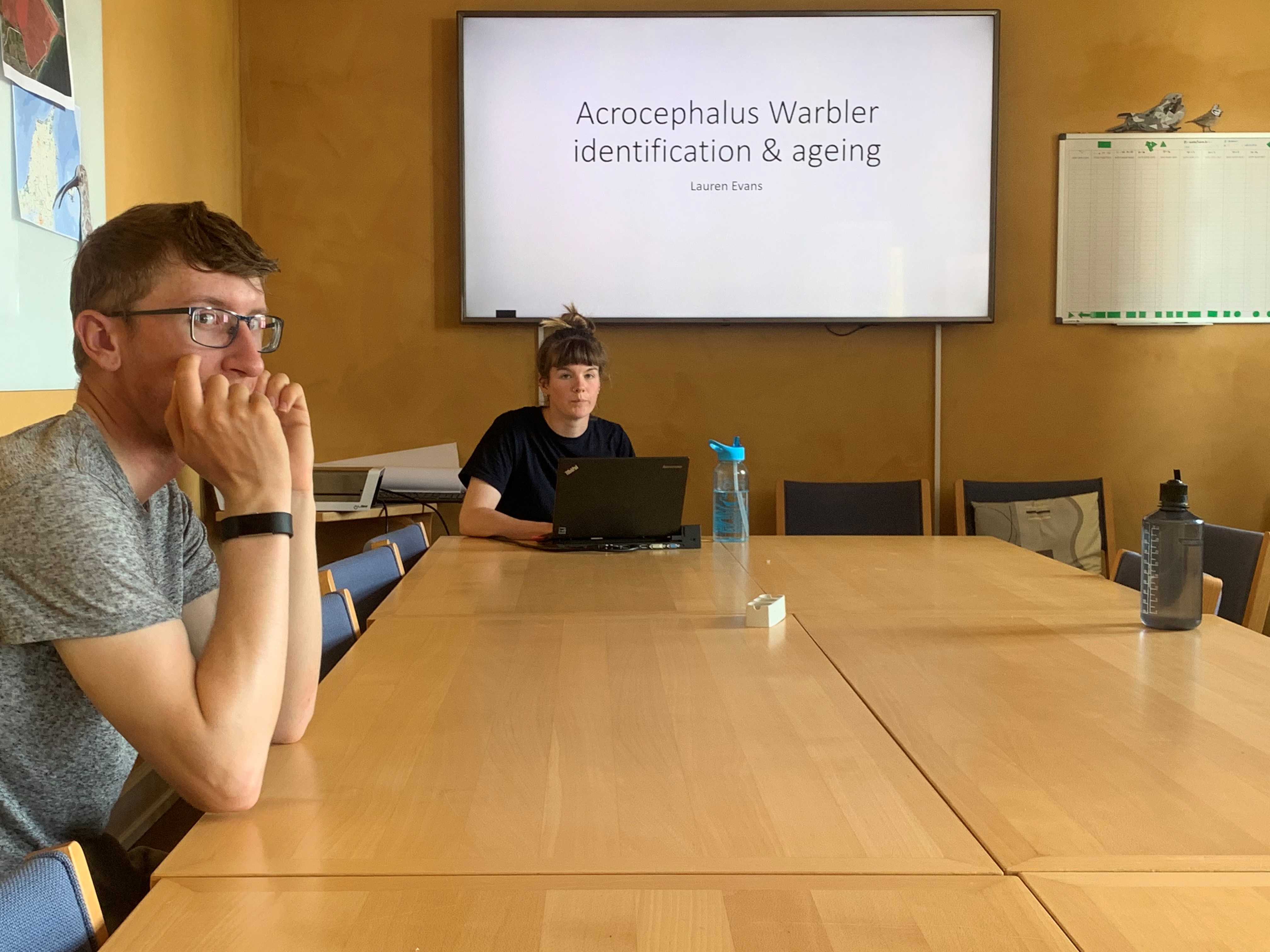
Late morning we went to Carlo Pedersen , where he took us on tour at his farm and it was nice going out of Skagen and some of things see there was Roe deer, Fallow deer,Osprey ,corn Bunting and we also saw the common buzzard that was tag few weeks ago by us. A special thanks to Carlo Pedersen for his hospitality and we really appreciate it.
Back at the station we had a presentation from Lauren, which was nice and educational. I have learned a lot about the difference between marsh warbler and Reed warbler with their ageing.
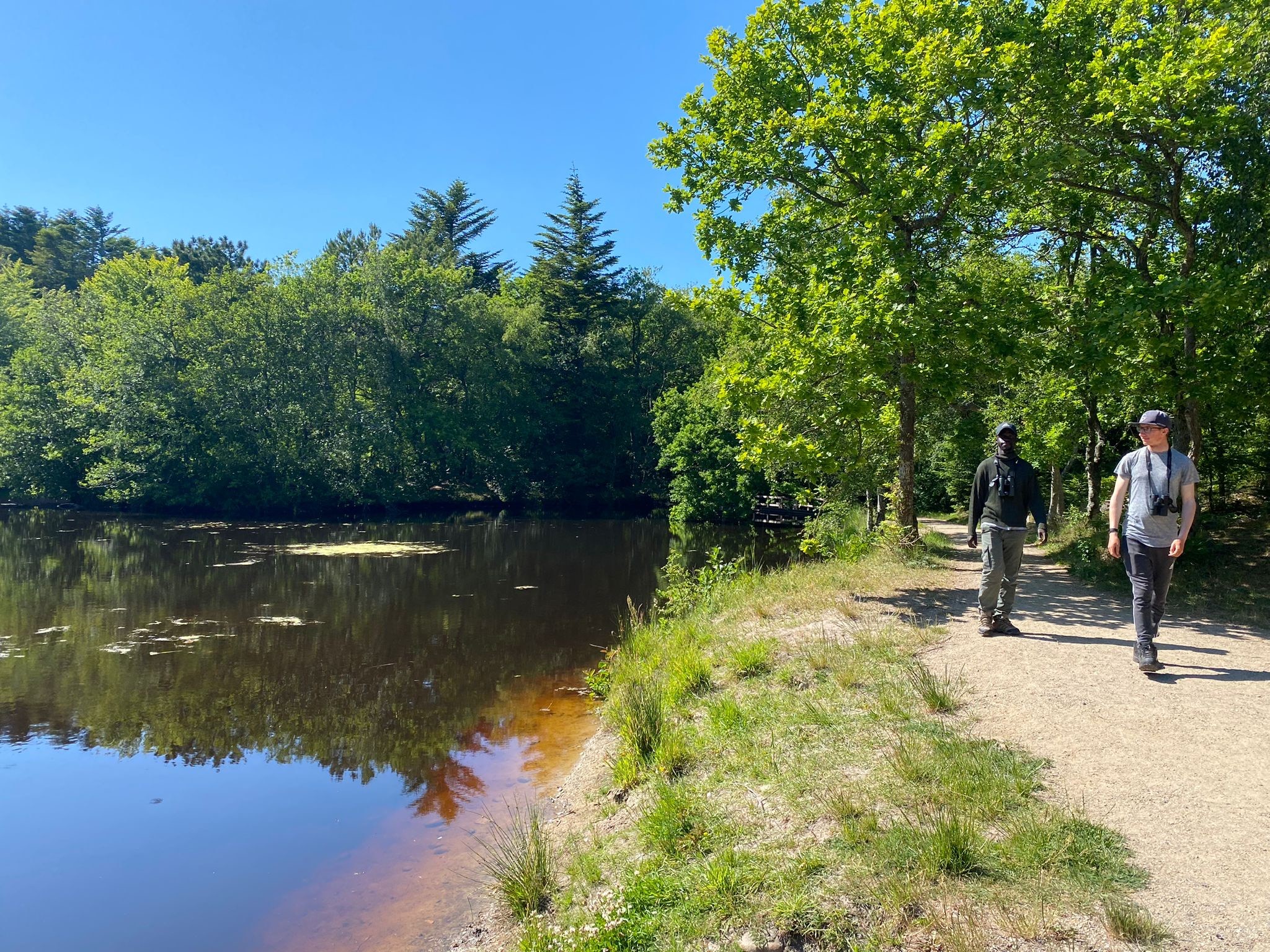 Skagen Bird Observatory: Dante Shepherd, Lauren Evans, Michael Colley, Zach Pannifer
Skagen Bird Observatory: Dante Shepherd, Lauren Evans, Michael Colley, Zach Pannifer
Steppe Eagle Joined by Lesser Spotted Eagle
Today Lauren and Michael headed to Skarvsøen for six hours of ringing for the CES and so there was no ringing at Kabeltromlen. Each round had some birds to keep them busy. Meanwhile, I headed to World's End for observations and Dante headed south to Flagbakken to look for raptors. My highlight was two close Rosefinch (Karmindompap), which included a singing first summer male. Dante managed to see the Steppe Eagle for the second day in a row, and this time it was also joined by a Lesser Spotted Eagle! For the rest of the day we all napped and relaxed before Lauren and Dante cooked us all a delicious dinner.
Today's Ringing Totals:
Rørsanger (Reed Warbler) - 21
Kærsanger (Marsh Warbler) - 4
Gærdesanger (Lesser Whitethroat) - 1
Tornsanger (Whitethroat) - 2
Munk (Blackcap) - 4
Bogfinke (Chaffinch) - 1
Today's Observations:
Lille Præstekrave (Little Ringed Plover) - 2
Nattegal (Thrush Nightingale) - 1
Sortstrubet Lom (Black-throated Diver) - 2
Karmindompap (Rosefinch) - 2
Steppeørn (Steppe Eagle) - 1
Lille Skrigeørn (Lesser Spotted Eagle) - 1
Link to all of today's observations.
Skagen Bird Observatory: Dante Shepherd, Lauren Evans, Michael Colley, Zach Pannifer
Havørn (White-tailed Eagle) above and Stor Præstekrave (Ringed Plover) below by Zach Pannifer
